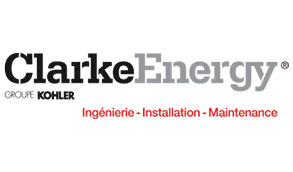Hospitals and healthcare centers have backup power in the event of a network load break. Discover our different solutions.
Principle of Food Safety for Healthcare Facilities
In France, to prevent any incident and guarantee the safety of people housed in social and medico-social establishments, a regulatory system (cf. Circular DHOS/E4 n – 2008-114 – of April 7, 2008 relating to the prevention of power cuts in health establishments ) requires each structure to ensure, in the event of absence from the national network, continuity of service for at least 48 time. Hospitals and healthcare centers therefore have an emergency power supply in the event of a network load break. This backup network, generally made up of a generator associated with inverters and batteries, is particularly sensitive and strategic. The law therefore requires that the generating set be tested monthly under dummy load and at least twice a year under real load on the network . The reason is to avoid energy breaks in survival & protective equipment for hospital patients: fire detectors, security lights, elevators, etc.
The law stipulates that these installations must be powered by a Safety Power Supply (AES) in accordance with standard NF S 61-940. These AES can be with accumulator batteries, according to appendix A of standard NF S 61-940, or with generating sets compliant with standard NF E 37 312:
“A replacement generating set can be used as a safety source provided that it complies with the NF S 61-940 standard and that the power necessary to ensure the start-up and operation of all the fire safety equipment is sufficient. When the replacement source includes several generating sets, in the event of failure of one of them, the available power must remain sufficient to ensure the start-up and operation of all the fire safety equipment”
The best way to test the generator set without alternating the quality of service – shutdown of sensitive machines, service note, etc. – is to perform generator maintenance on a load bank . The load bank will simulate the load emitted by hospital equipment – elevator, medical equipment, etc. – and confirm the capacity of the generating set to take over in the event of a cut on the main network.
These tests carried out by maintainers or directly by the technical teams of the hospital center are fast and very effective. They are often coupled with a unit maintenance operation and enable the repair to be validated. Generator set manufacturers (SDMO, Cummins, Genelec, etc.) also strongly recommend running the set for a few minutes each month.
Principle of Food Safety for Healthcare Facilities
- Load bank for regular testing of the backup generator
- Tunnel load for generator ballast
- Battery discharge test bench
- Inverter test bench
Which bench to choose for your generator for a hospital, care center or EPHAD?
The bench must be able to simulate the rise in load of the generator: the start-up of an elevator, of surgical equipment, etc.
The load bank must allow rapid load impacts and load shedding, and its power must be at least equal to the power of the generator set for it to be tested at 100% of its capacity.
Reference texts on safety in hospitals
- Annex to circular Circular DHOS/E4 n -2008-114 – of April 7, 2008
- Article R6111-22 on the safety of healthcare facilities in the event of an energy network failure






















